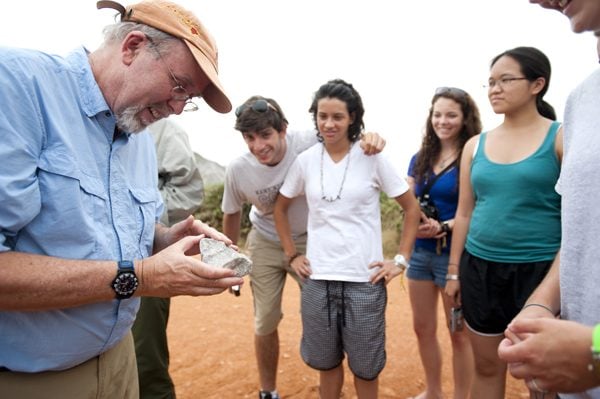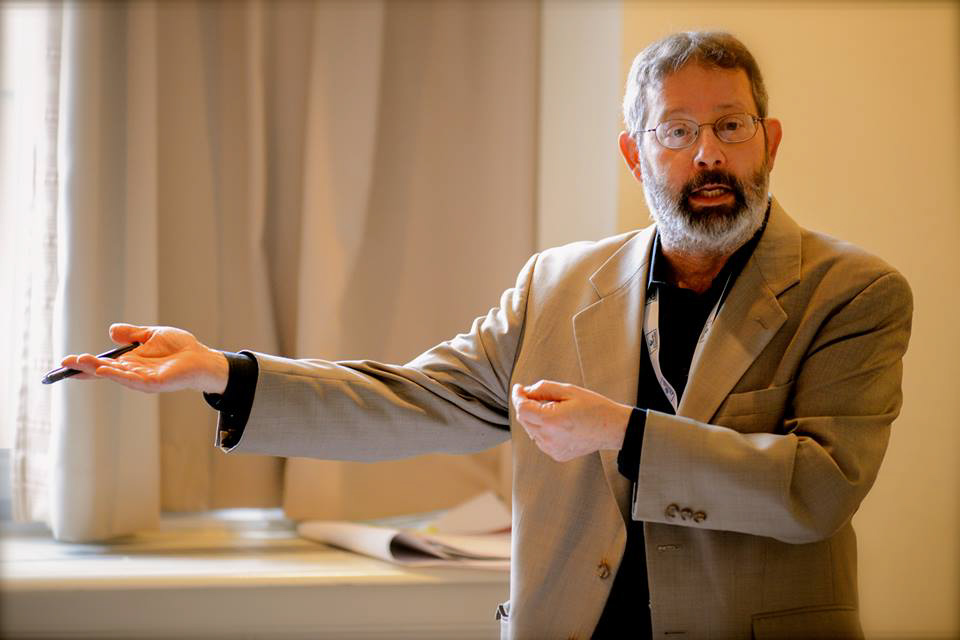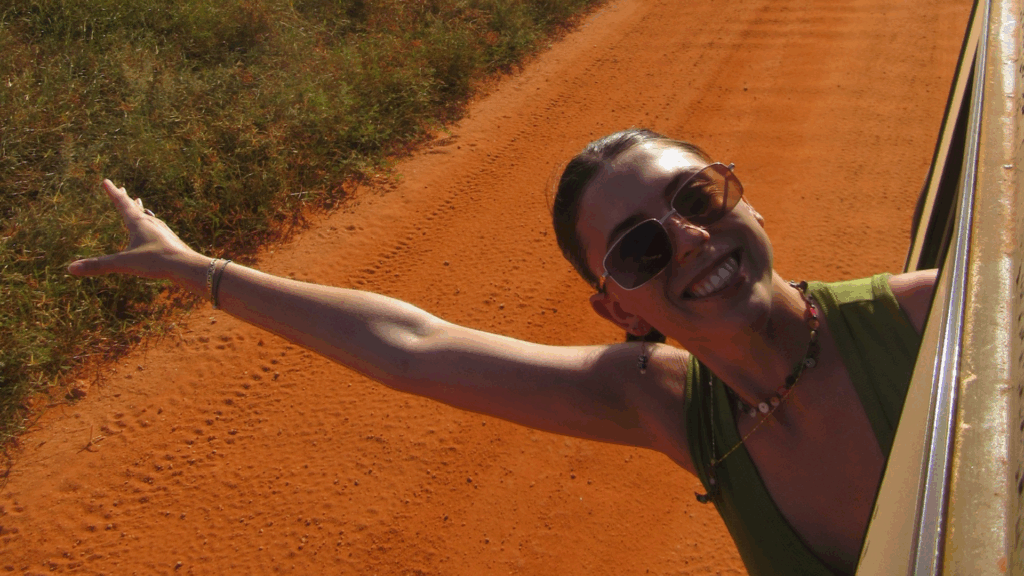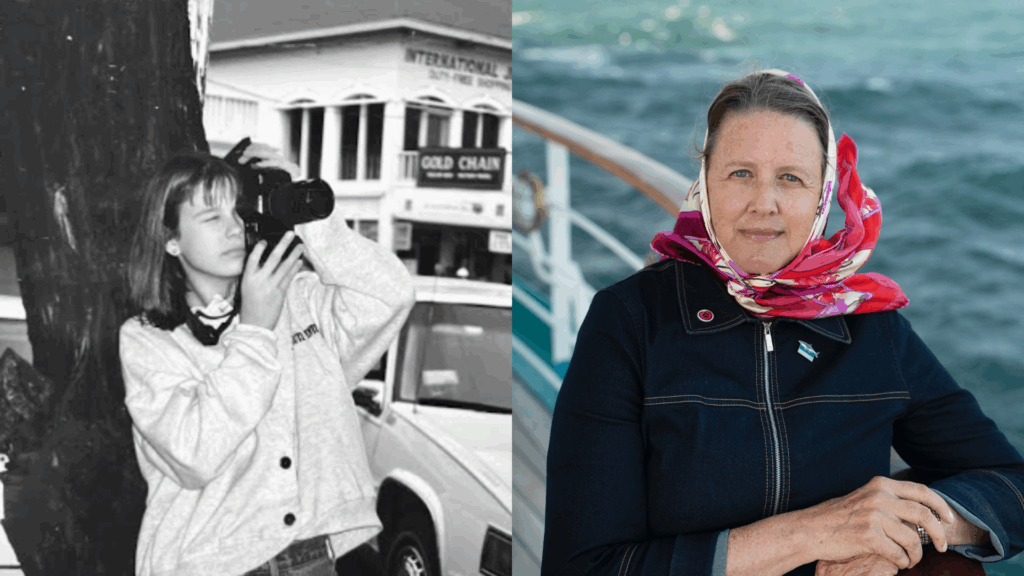
MV Explorer, Indian Ocean, March 12–Geology professor Ken Hon was playing a computer game with his seven-year-old daughter on board the MV Explorer around noon on Friday, March 11, when a student alerted him that there had just been a devastating earthquake and tsunami in Japan.
Hon, who studies related hazard fields in volcano research, sprang into action and stayed up late that night collecting news, scientific information, and charting buoy sensor data.
By the next morning, Hon, who is traveling with his family and teaching geology on the Semester at Sea Spring 11 voyage, gave a Power Point presentation to participants who packed into the large Union lecture hall as he explained the causes of the 8.9 magnitude earthquake–the largest in Japanese recorded history; and the principles behind the devastating forces of the tsunami which swept away people, cars, homes, ships, trees, and anything else in its path.
Hon, former Chair of the Geology Department at the University of Hawaii at Hilo, also provided a historical overview of the heavily earthquake-prone “Ring of Fire” area, and photos from news sources showing the damage as the MV Explorer was sailing in the Indian Ocean from Chennai, India, to Singapore.
“The death toll will rise into the thousands,” Professor Hon told a hushed audience of hundreds of students, faculty, staff, Life-Long Learners, and family members who were eager to learn more about the catastrophe.
“But the infrastructure will be significantly less affected because of strict building codes,” Hon said. The earthquake violently shook buildings for 90 seconds and made the earth tremble so hard that people were unable to walk, according to news sources. “Tokyo withstood it well,” Hon said. “The buildings are fine. The buildings in Tokyo were shaking, but didn’t collapse.”
The 104th SAS voyage is scheduled to visit two ports in Japan: Kobe on April 4 and Yokohama on April 7. The situation is closely being monitored as it relates to the current voyage, and there are no current itinerary changes, according to SAS program officials.
Japan sits in an area where at least five tectonic plates come together, Hon said. This earthquake was the result of movement of the Pacific tectonic plate sub-ducting under the plate (North American) where Honshu Island sits. Dozens of aftershocks, 6.0 and higher, are still being felt.
“Now other plates are adjusting, so there’s going to be earthquakes along northern Honshu Island,” he said, adding the event moved the island of Honshu a couple of yards east. It was not related to the earthquake in China on March 10, which was a result of the Indian plate moving against Burma and pushing into China, he said.
“The epicenter was located 130 kilometers offshore from Sendai…at a depth of 24 kilometers, (about 15 miles below the earth’s surface),” Hon said. “The ocean floor shifts and from 15,000 feet deep, it agitates a whole column of water which is pushed up and out from the base of the sea floor.” It takes at least an 8.0 earthquake to trigger a tsunami, he explained.
“It’s not a cresting or breaking wave, it’s a sea level rise,” said Hon, who uses seismology data in studying volcanoes. “It went as far as two miles inland. It’s hard to escape one of these tsunamis. Residents only had 10 to 15 minutes to evacuate. You just pick up and leave. You can’t walk two miles in 10 minutes. The roads were clogged.
“The amount of force rips houses from their foundations and picks up debris. As the water goes back out, it creates huge turbulence like whirlpools. In Guam, they had two nuclear subs ripped from their moorings and they had tugs chasing after them.”
The wall of water then speeds across the ocean. “The tsunami waves move about 400 to 700 kilometers an hour,” Hon said. “So they are very, very rapid. They basically move as fast as you could fly across the ocean, about as fast as a jet would fly,” he said. The tsunami struck Hawaii six hours later and the west coast of the U.S.10 hours later, he said.
“The average height was 23 feet in Japan, according to news reports, but the maximum was six to 10 feet in Hawaii. Crescent City in California got their docks hammered, but not the damage like in Japan. Along the west coast in the U.S. there was minor damage,” he added.
“Tsunamis take five to 15 minutes for each rise and drop cycle. At sea, a ship would barely notice. It would go up one and a half meters for 10 minutes, then go down, if it was close to the epicenter.”
He displayed a potential hazard “shake” map of Japan, which indicated areas in dark red that are more prone to shake damage because the area is mostly loose sediment, rather than rock. “There was bed rock in the north (near Sendai where there was ironically less shake damage), and mud to the south near Tokyo, a lot further away, where there was a lot of shake damage.”
His presentation included photos of refinery fires, debris from splintered homes, houses and buildings on fire from natural gas, the flooded airport in Sendai, and newly built cars from factories adrift. “This is a real severe situation, especially north of Tokyo,” Hon said.
by Marie Bradby, Communications Coordinator, SAS Spring 2011.


